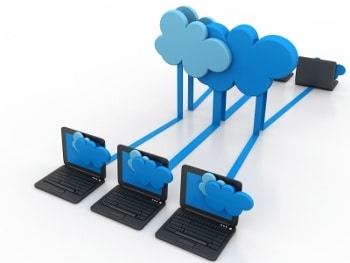Technology is, and always has been, a major part of healthcare. The two have been advancing hand-in-hand, seemingly forever. Cloud computing, though, has presented a challenge, and solutions, of a decidedly different order. While it is an opportunity of unquestioned importance, understanding how to benefit fully from it requires some study.
The Impact Of Cloud Computing On Health IT
If you are just beginning to consider how cloud computing may be useful for your hospital or medical practice, you should understand that your present way of doing things is decidedly limited. It basically involves a server, which may be located physically on site or off-site. Your data may be stored there or actually on individual computers, which may be connected by a local area network (LAN). This may require a lot of manipulation and lost time when it is necessary to coordinate a lot of information.
Cloud computing means that your operations take place in a set of shared resources in which you participate. The cloud resembles the electricity grid that individual users tap into. Of course the product is not electricity. Instead, it is all the various services needed by your participating devices for information storage, retrieval and manipulation.
Teaching Your Staff About The Cloud
You need to go beyond the basics when you try to adapt your facility to using the Cloud. The following three topics are good first steps in any in-service that you create to accustom people to cloud computing. Actual training will require much more technical information.
What Is IT Hosting?
IT hosting is the basis of cloud services. Instead of utilizing local hardware to perform operations and store data, your business utilizes a network of externally linked computers and servers to manage the patient care data, create invoices, store records, et cetera.
The advantages go beyond simply displacing operations. Practices that use the cloud can avoid massive expenditures. There is no longer any need to make huge financial outlays for servers, computers and other equipment. Nor do you need to pay as much for maintaining all those devices. The equipment is already out there. You pay for services instead of hardware.
This is sometimes referred to as desktop hosting, private cloud computing, application hosting, or IT outsourcing. It is based on the concept of utility computing. This is where the packaging of computing resources like storage, hardware, services, applications, etc., and charging is based on usage, not equipment.
ASP And SaaS
Application Service Providers (ASPs) started up when the Internet expanded rapidly during the 1990s. These businesses provided an alternative to storing data on local computers. Operating offsite, they were the first step to the present cloud model. However, the network was much more centralized and limited in scope. Many businesses continue to rely on these organizations.
Software as a Service (SaaS) models are extensions of these older methods but it is also distinct business architecture. One key advantage is the scalability. A small business can grow rapidly without running into the once-common bottleneck presented by hardware needs.
Cloud computing does not just offer your practice a way to take better care of your patients and maintain an appropriate revenue for services provided, it also makes it easier to grow in response to patient needs and build a stronger practice.
What About IaaS?
Infrastructure as a Service is another version or element of cloud computing. It is also known as hardware as a service. An outside business manages the infrastructure used to deliver the environment needed. This engagement typically works well for practices that have a business need to keep some or all of their infrastructure locally.
Utilizing The Cloud
The benefits of off-site cloud computing are numerous. Here are a few:
- Built-in Scalability – If your needs increase, it is up to the hosting company to have the equipment necessary to meet those needs. You pay for the amount of services you consume, not the new equipment.
- Access to IT expertise – You don’t have to hire a dedicated IT tech. The expertise from networking to virtualization to HIPAA is available from your hosting provider.
- Backup and Disaster Recovery – You need to have the ability to store and retrieve data. That is a given. You also need to have the availability of off-site backup in case there is a problem with an on-site server or the place where it is located as in the case of fire or flood. Archiving is another element to consider since all the data needs to be kept, basically, forever. This continually keeps requiring more and more storage space with more and more terabytes of capacity being required.
These are a few of the benefits of using cloud-computing services. To get a better understanding of how you can benefit even more by using Health IT Cloud Services contact us, or leave a comment below.
Image courtesy of: jscreationzs/ Freedigitalphotos.net
